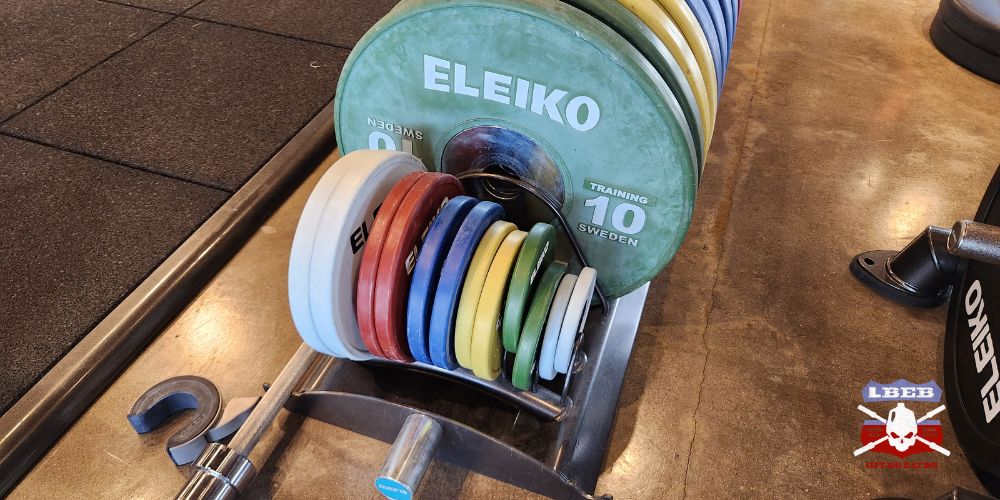If you’re shopping for new weight plates, you’re probably wondering why bumper plates are much more expensive than iron plates.
Bumper plates are expensive because of the high-quality rubber and specialized manufacturing process, which iron and steel plates don’t go through.
While more factors influence bumper plate prices, are they worth your hard-earned money?
Table of Contents
Why Are Bumper Plates So Expensive?
Manufacturing Process and Materials Used
Bumper plates are typically made from high-quality rubber, which is designed to absorb impact and protect the barbell, plates, and the floor when dropped.
This virgin rubber is known for its durability and resilience but is more expensive than recycled rubber. However, the manufacturing process for these plates involves specific techniques and materials that drive up their cost.
For example, the rubber must be molded and cured correctly to ensure it has suitable properties for weightlifting. It requires more time, energy, and expertise, which adds to the cost. This intricate process requires specialized equipment and skilled labor to ensure the bumper plates meet the desired specifications.
Durability and Longevity

One of the key advantages of bumper plates is their durability. These plates are designed to withstand rigorous use, heavy impact, and repetitive dropping without sustaining significant damage.
Bumper plates are much more resistant to wear and tear than cast iron plates, which can crack or break when dropped. Especially when made from virgin rubber. Crumbed recycled rubber bumper plates don’t last as long.
While the initial cost might seem high, their extended lifespan means that you will not have to replace them as frequently as you would with other weight plates.
Safety Considerations
Bumper plates are essential for the sport of Weightlifting and CrossFit. You drop the weight from overhead when performing exercises such as the clean & jerk or the snatch.
You can’t drop steel plates for reasons already stated. The rubber construction of these plates ensures that they absorb much of the impact when dropped, minimizing the potential for bar bounce and floor damage.
Specialized Manufacturing and Lower Demand
Compared to other types of weight plates, such as cast iron plates commonly used for bodybuilding, the demand for bumper plates is relatively low. This lower demand could be attributed to bumper plates being primarily used in Olympic weightlifting and high-intensity training programs like CrossFit.
When manufacturers produce weight plates in larger quantities, the cost per unit generally decreases. However, due to the lower demand for bumper plates, manufacturers may be unable to produce them in large volumes, resulting in higher production costs.
Higher Cost of Raw Materials
The cost of raw materials used in the manufacturing process is another factor that contributes to the overall expense of bumper plates. Rubber, the primary material for bumper plates, can be costly, especially when sourced from high-quality suppliers.
Fluctuating prices in the rubber market can directly impact the cost of production, which is then reflected in the selling price of the plates.
Additionally, other additives and components used in the manufacturing process, such as steel inserts or metal discs within the plates, can drive up production costs further.
Are There Cheaper Alternatives To Bumper Plates?
There are no cheaper alternatives to bumper plates for being dropped during Olympic Weightlifting or CrossFit training. However, there are cheaper bumper plate models that use recycled crumbed rubber.
However, these are typically thicker and less durable than virgin rubber bumper plates.
Are Bumper Plates Worth The Cost?
Bumper plates are worth the higher cost due to their durability, safety features, and ability to withstand repeated impact. While they may initially seem expensive, bumper plates offer a long lifespan and provide added protection for your equipment during Weightlifting exercises.
